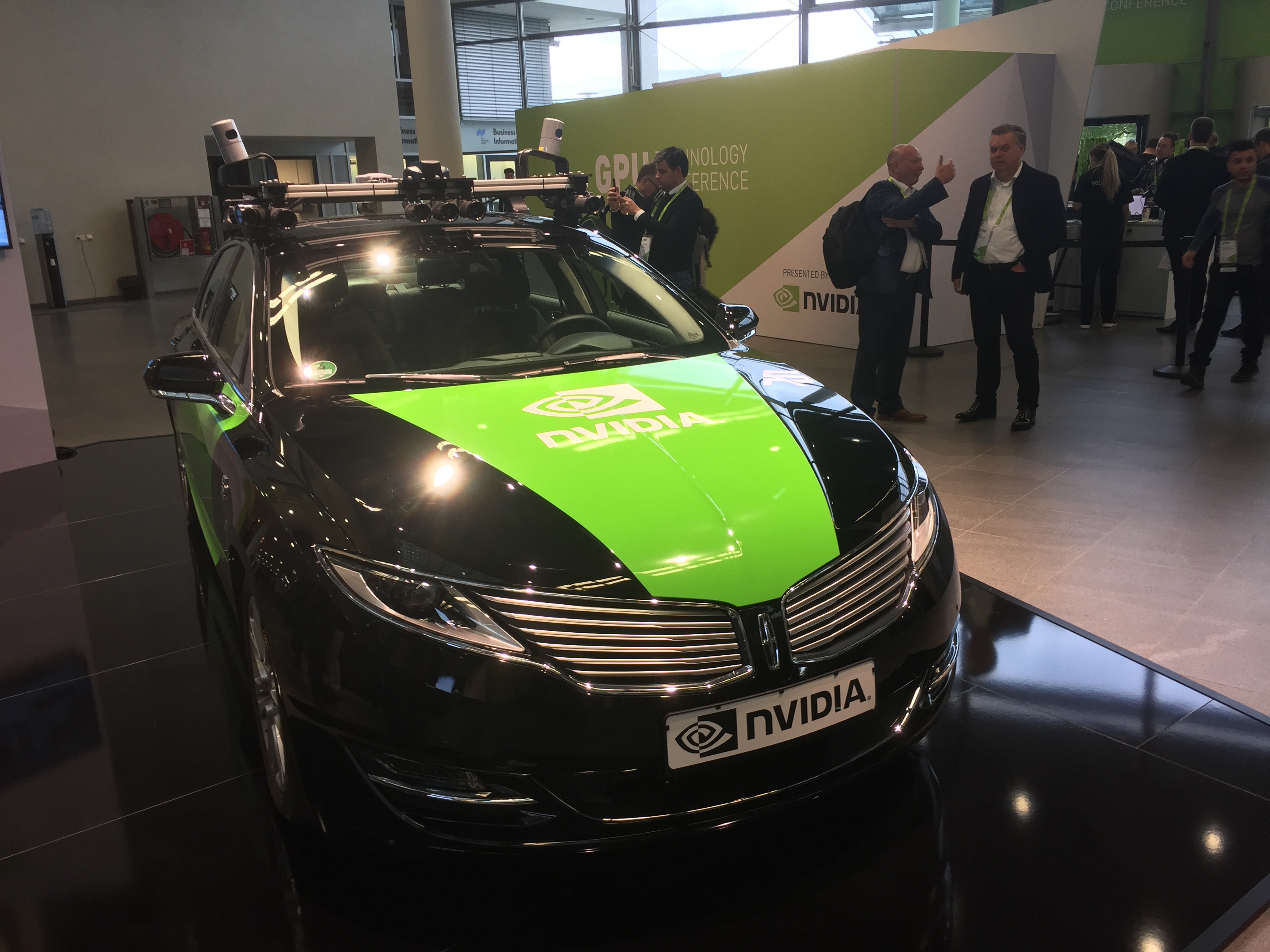Share

It was a rush to the finish to get our new GVC2000 rugged display computer – one of the first two mission ready systems we’ve announced that are based on our innovative Lightning platform - to Munich for the second European GTC show. However: we made it, and we also had a brand new demonstration running on our Jetson TX2 small form factor computer the GVC1000, showing how the GVC1000 (and GVC2000) could operate within an autonomous vehicle environment.
GTC Europe moved from last year’s venue in Amsterdam, The Netherlands to Munich, Germany which is the heart of Germany’s automotive industry with major players such as BMW, Audi and MAN headquartered there. In the lobby there were concept vehicles from Mercedes alongside Tesla and the autonomous electric racing vehicle powered by NVIDIA GPUs.
As you may have guessed: automotive, and especially autonomous vehicles, are a significant strategic imperative for NVIDIA – and their aspirations for that market were clearly communicated by NVIDIA CEO Jensen Huang in his keynote address, which kicked off the show.
Leapfrog AI
It came as no surprise that Jensen provided examples of leapfrog AI use cases ranging in scale from astronomical to sub-molecular. In between, and of particular interest to Abaco, was the strong inclusion of automotive autonomy and the priority NVIDIA places on self-driving cars. Of particular note was the first public announcement of the ‘Pegasus’ platform for ride-sharing robo-taxis, operating at Level 4 (full) autonomy. Pegasus, a 500W board-level solution, will have 10x the processing power of the current Drive PX2 platform and is expected to support ASIL-D automotive system safety requirements through algorithm and system redundancy. Robo-taxis are expected to deploy in 2020, in advance of personal vehicles, with a market projection of $280 billion by 2030.
At Abaco, we have a long standing partnership with NVIDIA: a few years ago, we were named by NVIDIA as its preferred provider of the company’s GPU technology for applications in harsh environments. Since that time, we’ve announced many solutions that take advantage of what’s possible with NVIDIA GPU silicon. The latest is the GVC2000, which pairs a GM107 GPU with a 12-core Intel Xeon processor, a combination that will push the limit of what’s possible in ground vehicles and avionics applications. Unsurprisingly, we’re engaging with numerous prospective customers who see its potential. And, beyond that: it’s exciting to consider the prospects of us building rugged, thermally-managed modules around the NVIDIA Pegasus platform in automobiles.

